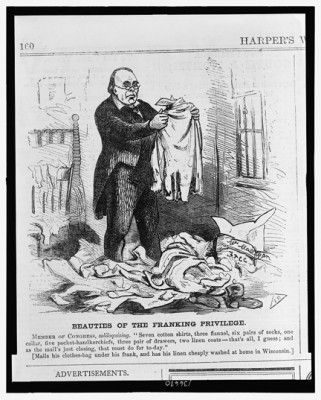
Franked Mail: The Original Political Mail
In a nutshell, franked mail is mail sent from congresspersons to their constituents to communicate official business. You might even say that franked mail is the original political mail.
The history of the congressional frank dates back before the founding of the United States, to the English House of Commons in the 17th century. The frank was authorized by the American Continental Congress in 1775 and the first franking law was enacted in 1789.
Over the years, various laws and statutes were passed, expanding or contracting franking privileges, even abolishing and reinstating it several times. The most recent changes to the franking privilege came in 1973 after a public outcry about the excessive amount of mail members of Congress were sending that was not considered “official business” and more political in nature. A law suit was even brought, ultimately resulting in the law change. These changes brought about the creation of a House Commission on Congressional Mailing Standards oversight office to ensure that all mail was reviewed and assured to comply with rules regarding the type of mail and the content of the messages in the mail. In 1991, the “Official Mail Allowance” (OMA) was instituted to provide accountability and public disclosure. In 1992 a law was passed to prohibit members of Congress from mailing outside of the congressional district they represent. In 1997, yet more changes were made: expanding the prohibition of mailings prior to a general election from 60 to 90 days; all mailings must now include a disclaimer indicating that the mail was paid for at the taxpayer’s expense; and Members of Congress must disclose the number of mailings and costs for the mail on a quarterly basis.
Politico wrote in September of this year, “Gone are the days of the congressional flyer”1 and that’s probably very true. The use of the congressional frank for mail has been steadily decreasing since records began being collected and published. According to the Politico article, which reviewed the House’s quarterly disclosures, franked mail was down 68%, with Republicans sending the most franked mail (accounting for 65% of the franked mail for the most recent period analyzed). The restrictions on content for franked mail, reductions in the overall franking budget for congresspersons, as well as the speed and affordability of email and other digital communication methods have helped to change the landscape for the use of the franking privileges. Franked mail has been down before, but don’t count it completely out yet. Congresspersons still using the mail feel it is a very important tool for communicating with constituents and more effective at getting them to show up for town hall meetings, job fairs and meet and greet events.
Learn more about the franking privilege at the Franking Commission website.